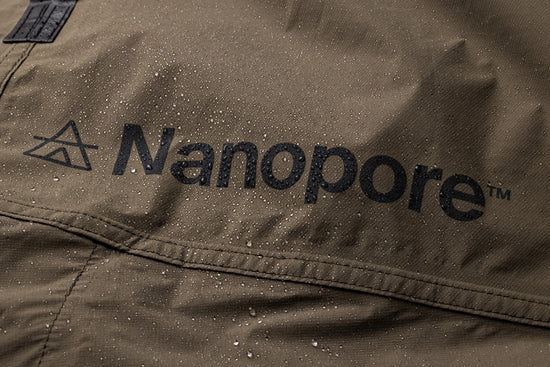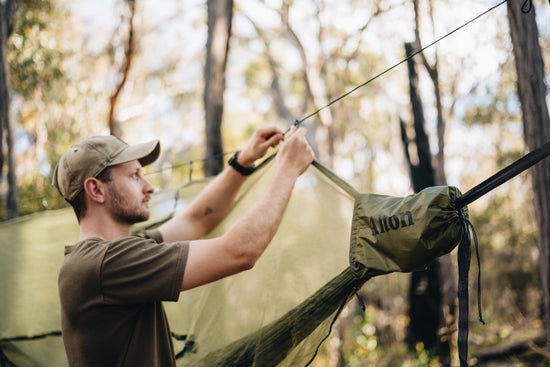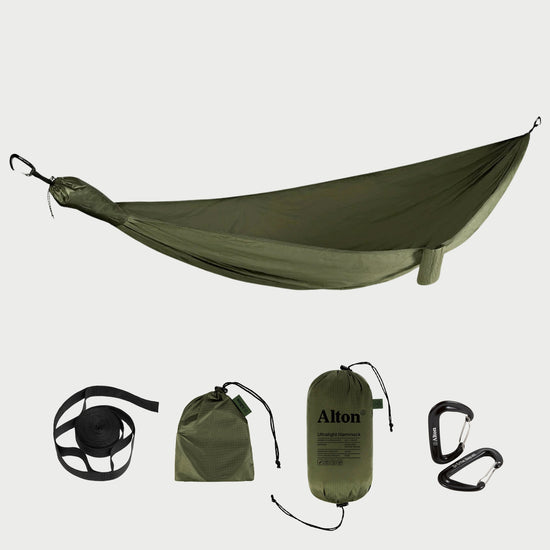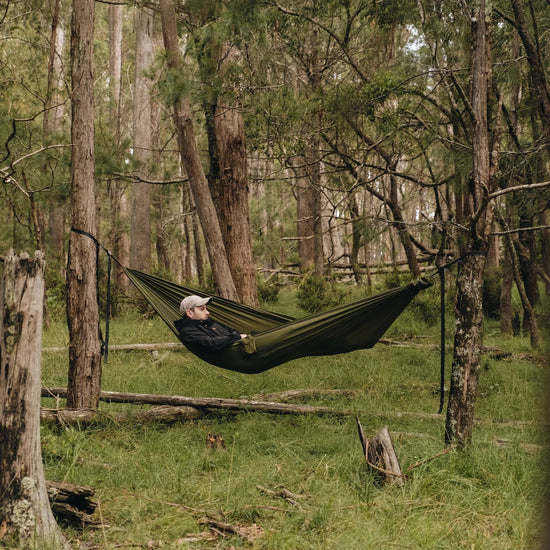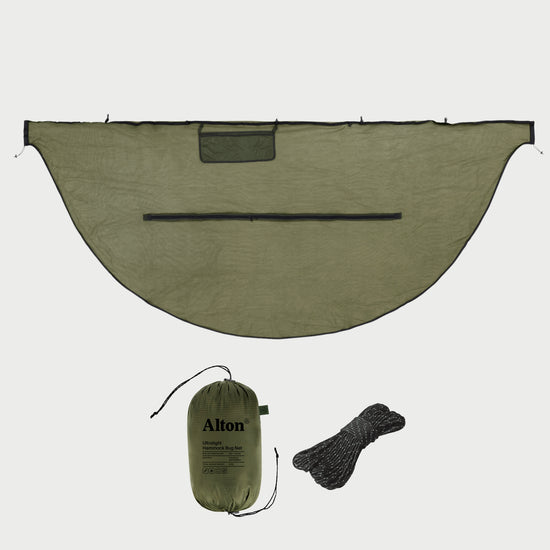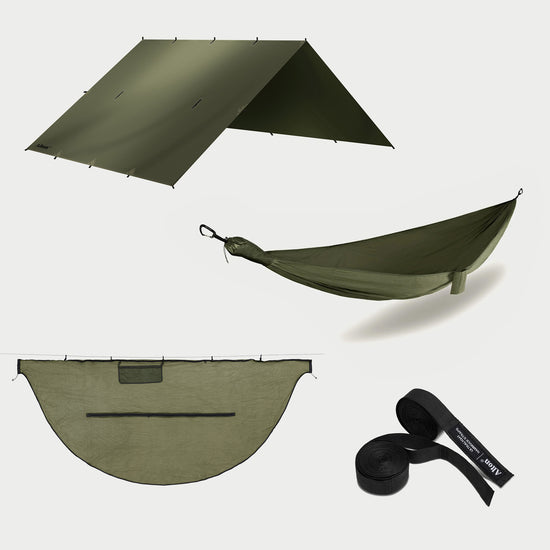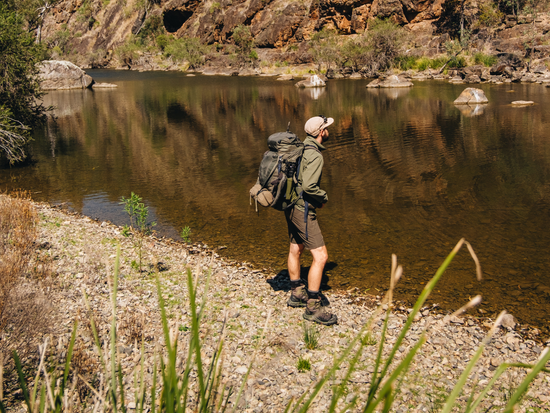Do you want to take your overnight adventures to new heights (literally)? Then you need to try hammock camping.
Over the last few years, camping hammocks have steadily gained popularity among hikers, bushcrafters, and bikepackers around the world. And it’s not hard to see why! There are so many reasons why you should try hammock camping: impressive advantages, versatility, lightweight performance and durability are just a few.
In this blog, we share our essential gear guide for hammock camping, covering everything you need to know to equip yourself for the wild.
Our Hammock Camping Gear Checklist
Having a well-equipped hammock camping setup is a must, not just for comfort, but for protection from the elements and safety. Here is our go-to camping hammock gear:
Essential Hammock Camping Gear
-
Camping hammock
- Suspension system
Condition Dependent Additions
-
Rain protection (eg. rainfly or tarp)
-
Insulation
-
Bug Net
-
Groundsheet
Now, you’ll notice that our ‘essential’ gear list for hammock camping is very short. This is because your hammock camping gear requirements will be condition dependent. In hot, arid conditions, you may decide to skip the rain protection and take a bug net instead. Or, in the wet weather, you might take rain protection and insulation, but no bug net. As always, do your research before you go and be prepared for the unexpected.
How to Choose Your Hammock Camping Gear
To help you choose the best hammock camping gear, let’s delve into a bit more detail on the items from our gear list.
Camping Hammock
Choosing the right hiking hammock can be a game-changer for your camping experience. When selecting a hiking hammock, it's important to consider these factors:
Length
When shopping for a camping hammock, take a moment to check the dimensions. You are after something that will comfortably accommodate your body size, ideally around 60-90 cm longer than your height.
Width
You want a camping hammock with ample space for you to lie down diagonally, which is the preferred sleeping position for most hammock campers. Between 1.2 to 1.6m wide is ideal, although if you are extra tall then a double size camping hammock could be a better fit.
Strength-to-Weight Ratio
Invest in a camping hammock that is constructed from high-quality materials that are engineered to perform in the wild, balancing lightweight performance with durability.
Easy Setup
Don’t forget to keep the setup process in mind when purchasing a new camping hammock. Look for something that is designed with functionality in mind, offering easy setup and pack down.
Versatility
Some hiking hammocks today come with rain protection, bug nets and gear storage all built-in. Although this might seem handy, these additions come at the cost of extra weight and bulk. That’s why we suggest choosing a versatile design with compatible add-ons, rather than built-in features, that allows you to tailor your setup to the conditions.
Weight capacity
It goes without saying that your hammock needs to be strong enough to support your weight. Always check the weight capacity listed by the manufacturer before you commit to buying anything.
Suspension System
To set up your camping hammock, you’ll need a suspension system. Hammock suspension systems are usually made up of straps or ropes, along with carabiners. Not all camping hammocks come with suspension straps, so you may need to purchase items separately. Here’s what to look for:
Outdoor Performance
Your suspension system should be made to withstand the rigours of outdoor use. Invest in hammock straps and accessories that are made from high quality materials that are resistant to abrasion, friction, and UV exposure.
Easy to Use
Choose suspension straps that are designed for ease of use, flexible configuration options and efficient set up and pack down.
Tree Friendly
Using ropes or straps that are less than 2 cm wide can cause serious damage to trees. Fortunately, most hammock suspension straps made by reputable brands are designed to be tree friendly – yet another reason to invest in good quality gear!
Weight Capacity
Your suspension straps must be strong enough to support your weight and hold you securely. As always, double check the weight rating specified by the manufacturer.
Rain Protection
Even if the weather forecast is looking clear, taking some form of rain protection is a must when you are camping in remote locations.
Although some hiking hammocks come with a built-in rain fly, we think a lightweight waterproof tarp for camping works best. By extending over your hammock, a tarp provides more protection for you and your gear and prevents any water entering your hammock when you are getting in and out.
Insulation
Because a hiking hammock holds you suspended in the air, you lose the most heat from the underside of your body. This is compounded by the fact insulation loses its effectiveness anywhere it is compressed by your bodyweight.
For this reason, hammock camping can feel extra chilly when the temperature drops. In warmer weather, a top layer of insulation will be enough to keep you warm, but in cold conditions, you’ll need to insulate underneath your body as well. Fortunately, with a little preparation, you can enjoy hammock camping all year around:
Sleeping Bag or Camping Quilt
You can use your existing sleeping bag or camping quilt with your camping hammock. A quilt is the preferred option for many hammock campers, but if you are using a sleeping bag just leave it partially unzipped so you can get in and out of your hammock with ease.
Hammock Underquilt
A camping hammock underquilt rests around the outside of your hammock, preventing the insulation from being compressed and providing you with a cocoon of warmth. If you want the best possible insulation, then a hammock underquilt can significantly improve your comfort.
Sleeping Mat
Some hammock campers use a sleeping mat with their hammock, which adds additional insulation as well as giving you a more supportive sleeping surface. There are sleeping mats designed for use with hammocks, or some hammocks feature a built-in compartment to hold a sleeping mat in place.
Hammock bug nets are a handy addition to your setup, especially in the warmer months when insects are at their most active.
Some models of camping hammocks include a built-in mesh canopy, but in some cases this won’t be enough – mosquitos, flies and some other insects can still bite you through the thin fabric of a lightweight hiking hammock. We suggest using a detachable hammock bug net that fully encloses around your hammock for the best possible protection.

Groundsheet
A small groundsheet underneath your camping hammock can make your life so much easier. Think of this as your ‘door-mat’ – with a groundsheet beneath you, you can take your dirty shoes off and leave them on the side, then step into the hammock. Likewise, if you need to get out of the hammock during the night, you don’t have to fumble around trying to put your shoes on from inside your hammock, as you can just step out directly onto the groundsheet.
You’re all packed and ready for adventure!
When it comes to hammock camping, the right equipment can make a world of difference in terms of comfort, safety, and overall enjoyment during your adventures.
Just like all outdoor equipment, hammock camping gear varies widely in price, performance and quality. By investing in good quality gear that is designed to perform in the wild, you can go further and experience a whole new way of sleeping wild.
Want to know more about hammock camping?
Now you know what hammock camping gear you need, why not read our blog on how to set up your camping hammock? We give you step by step instructions and expert tips on how to optimise your hiking hammock setup for comfort, protection from the elements and safety.



